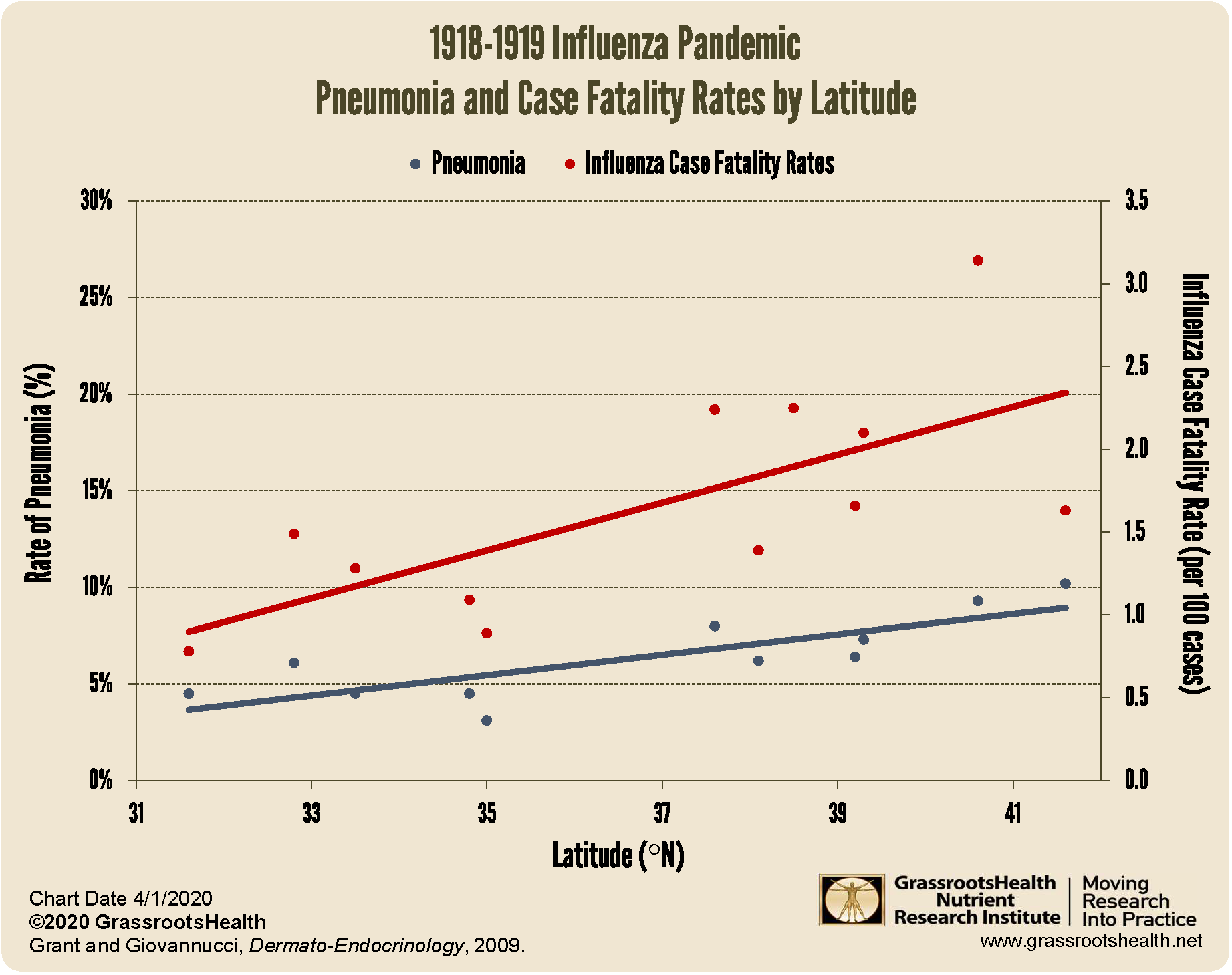Published on April 3, 2020
In a paper published in 2009, Drs. William B. Grant and Edward Giovannucci, both members of the GrassrootsHealth Scientist Panel, reviewed data from the 1918-1919 influenza pandemic in the United States to determine if solar UVB and vitamin D status may have played a role in the development of influenza-related pneumonia and fatalities. While a great number of deaths resulted directly from the influenza virus, many others were a result of secondary bacterial infections in the lower respiratory system causing pneumonia.
Sunlight and Vitamin D Help Boost Immunity
 It is well known that ultraviolet-B (UVB) radiation from sunlight increases production of vitamin D and its metabolites, which have demonstrated antibacterial and antiendotoxin effects against bacterial infections, including those involved with pneumonia and septicaemia (infection of the bloodstream). The higher latitudes have less UVB than the lower ones (closer to the equator). Vitamin D has also been demonstrated to have other important roles in immune function in response to bacterial and viral infections.
It is well known that ultraviolet-B (UVB) radiation from sunlight increases production of vitamin D and its metabolites, which have demonstrated antibacterial and antiendotoxin effects against bacterial infections, including those involved with pneumonia and septicaemia (infection of the bloodstream). The higher latitudes have less UVB than the lower ones (closer to the equator). Vitamin D has also been demonstrated to have other important roles in immune function in response to bacterial and viral infections.
With data available from twelve cities across nine states, this study provides evidence for a relationship between UVB exposure and the rates of pneumonia and fatality due to influenza during this pandemic. They found the lowest rates of pneumonia and fatality in areas such as Spartanburg, SC and San Antonio, TX, which are lowest in latitude and had the highest solar UVB irradiance, and the highest rates of pneumonia in Des Moines, IA and fatality in New London, CT, which are highest in latitude and had the lowest levels of UVB.
The chart below illustrates the findings discussed in this paper. A general trend can be seen with lower rates of pneumonia as a complication of influenza and influenza fatalities for those locations at lower latitudes within the United States where vitamin D production from UVB is more. This is consistent with a number of other papers published showing a decrease in other conditions closer to the equator–from type 1 diabetes to breast cancer.
How is Your Vitamin D Level During This Pandemic?
Make sure you know your vitamin D level, and take steps to keep it within a target of 40-60 ng/ml or 100-150 nmol/L! Through GrassrootsHealth Nutrient Research Institute, you can also test your essential elements magnesium, copper, zinc and selenium, toxins such as lead, mercury and cadmium, as well as your omega-3 levels, inflammation levels and thyroid stimulating hormone (TSH) level. Find out your levels today! Log on to the test selection page (click the link below) to get your tests and see for yourself if your levels can be improved.
Make sure you track your results before and after, about every 6 months!
Click Here to Access the Test Page
How can I track my nutrient intake and levels over time?
To help you track your supplement use and nutrient levels, GrassrootsHealth has created the Personal Health Nutrient Decision System called
For each specific supplement, you can track what days you take it, how much, and many other details. This will help you know your true supplemental intake and what patterns of use work for you to reach and maintain optimum nutrient levels. Check it out today!









